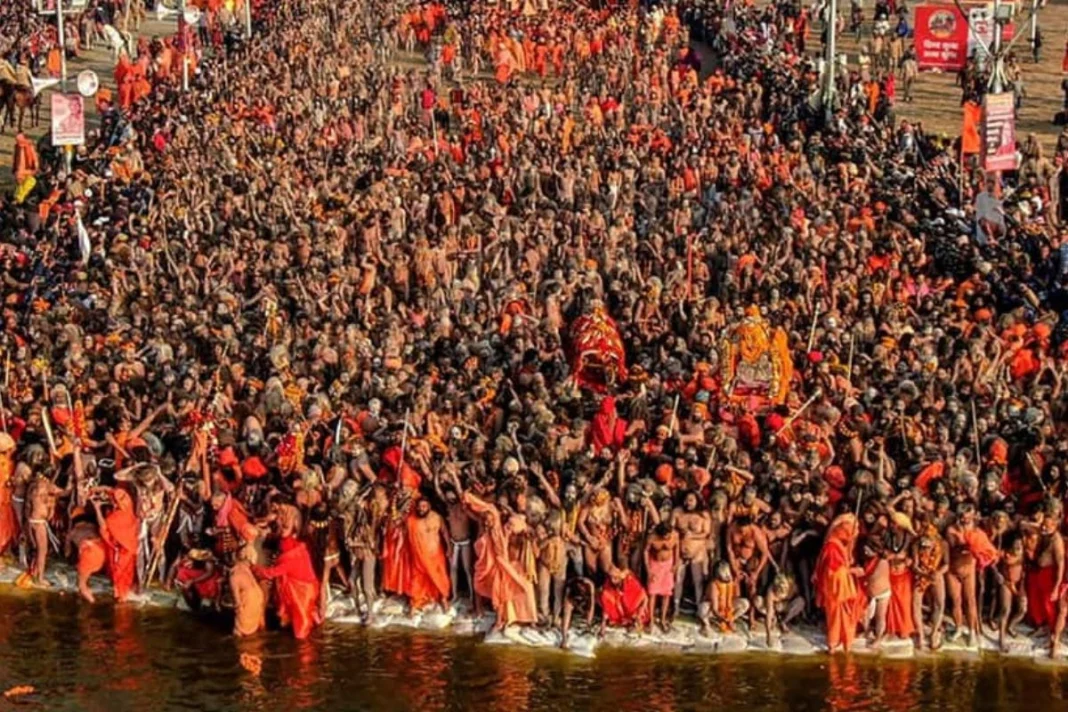The Mahakumbh 2025 in Prayagraj, Uttar Pradesh, is set to be the world’s largest religious gathering, drawing an estimated 400 million devotees. While the Indian government is hopeful that this mega event will attract significant investments and boost the economy, economists remain skeptical about its long-term impact.
Mahakumbh 2025: An Economic Powerhouse?
The Uttar Pradesh government has allocated a budget of Rs 7,500 crore, expecting the event to contribute over Rs 2 lakh crore to the economy. If each visitor spends an average of Rs 5,000, the economic impact could be substantial, potentially increasing India’s GDP by over 1%.
Sectors Expected to Benefit
The Mahakumbh is likely to create a ripple effect across various industries:
- Tourism & Hospitality: Hotels, guesthouses, and temporary lodging facilities are estimated to generate Rs 40,000 crore.
- Food & Beverage: Local eateries and street vendors could see a surge in business, adding Rs 20,000 crore to the economy.
- Religious Merchandise: Sale of spiritual items such as lamps, idols, and offerings is expected to contribute Rs 20,000 crore.
- Transportation & Logistics: Increased demand for local and interstate transport may generate around Rs 10,000 crore.
- Healthcare Services: Medical camps and emergency services could add Rs 3,000 crore.
- Retail & Small Businesses: Increased footfall may lead to a surge in local trade, benefiting small vendors and entrepreneurs.
- Media & Entertainment: With global attention, digital content, broadcasting, and event management companies could see a significant revenue boost.
- Infrastructure Development: Large-scale projects, including road construction, sanitation facilities, and smart city enhancements, will add economic value.
Why Are Economists Skeptical?
While the numbers seem promising, experts argue that much of the economic activity will be confined to the informal sector, making it difficult to quantify actual gains. Additionally, as most spending is on short-term goods and services, the long-term economic impact remains uncertain.
Key concerns include:
- A lack of long-term job creation
- Unstructured revenue collection from unorganized vendors
- Potential infrastructure overload with temporary solutions
- Environmental challenges due to excessive waste generation and resource depletion
- Inflationary pressures as demand for goods and services temporarily surges
Infrastructure & Investment Opportunities
The government has made significant infrastructure investments, including:
- 200+ newly constructed and upgraded roads for improved connectivity
- Beautification projects to attract post-event tourism
- Smart city initiatives focusing on sanitation and sustainability
- New bridges and flyovers to handle the influx of visitors
- Expansion of digital payment solutions to track spending and formalize transactions
- Enhanced security and crowd management systems to ensure safety and efficiency
- Development of waste management and water treatment plants to mitigate environmental concerns
- Improved public transportation networks, including new railway and bus services, for better accessibility
While these developments enhance Prayagraj’s appeal, experts emphasize the need for sustained investment beyond the Mahakumbh to ensure long-term growth.
Will Investors Bite?
The Indian government is optimistic about attracting foreign and domestic investments, particularly in real estate, retail, and hospitality. However, unless policies ensure long-term business viability, investor confidence may remain low.
Additionally, the demand surge is temporary, meaning businesses may struggle once the event concludes. Ensuring lasting economic benefits requires government intervention to facilitate investments that extend beyond the Mahakumbh.
Challenges for Investors:
- Limited post-event sustainability: Businesses may experience sharp revenue declines once the crowd disperses.
- Bureaucratic hurdles: Lengthy approval processes and regulatory challenges could deter foreign investments.
- Unclear policy framework: Without structured incentives, long-term investments may not materialize.
- Limited private sector involvement: The reliance on government spending rather than private partnerships raises concerns about economic diversification.
Environmental and Social Impact
The scale of the Mahakumbh also raises concerns about its environmental footprint. The massive influx of visitors will generate enormous amounts of waste, straining local resources. Authorities must implement strict waste management policies, water conservation strategies, and sustainable transportation solutions to mitigate the adverse effects.
Key Environmental Considerations:
- Waste Disposal & Sanitation: Implementation of waste segregation and recycling facilities.
- Water Conservation Measures: Efficient use of water resources, preventing excessive river pollution.
- Eco-Friendly Infrastructure: Construction of sustainable lodging and sanitation facilities.
- Green Energy Initiatives: Use of solar lighting and renewable energy sources.
Socially, the event presents an opportunity to showcase India’s rich cultural heritage, fostering tourism and global recognition. However, authorities must address concerns about overcrowding, safety, and accessibility to ensure a smooth experience for attendees.
Final Verdict: Short-Term Boost, Long-Term Uncertainty
Mahakumbh 2025 will undoubtedly boost economic activity in the short run, but whether it leads to sustainable growth and investment remains debatable. For a truly transformative impact, policymakers must focus on structured investment models, digital transaction tracking, and post-event economic planning.
Key Takeaways:
- Mahakumbh 2025 may generate Rs 2 lakh crore in economic activity
- Hospitality, tourism, and local businesses will see a significant boost
- Long-term economic impact remains uncertain
- Economists warn of short-lived financial benefits
- Environmental sustainability must be a priority to minimize negative impacts
- Strategic planning is needed to sustain momentum beyond the event
- Private sector participation and structured policies are crucial for lasting investment benefits
As India gears up for Mahakumbh, the balance between cultural grandeur and economic sustainability will determine its true success.



